Culture and Art in Sultanahmet: Best Museums Guide
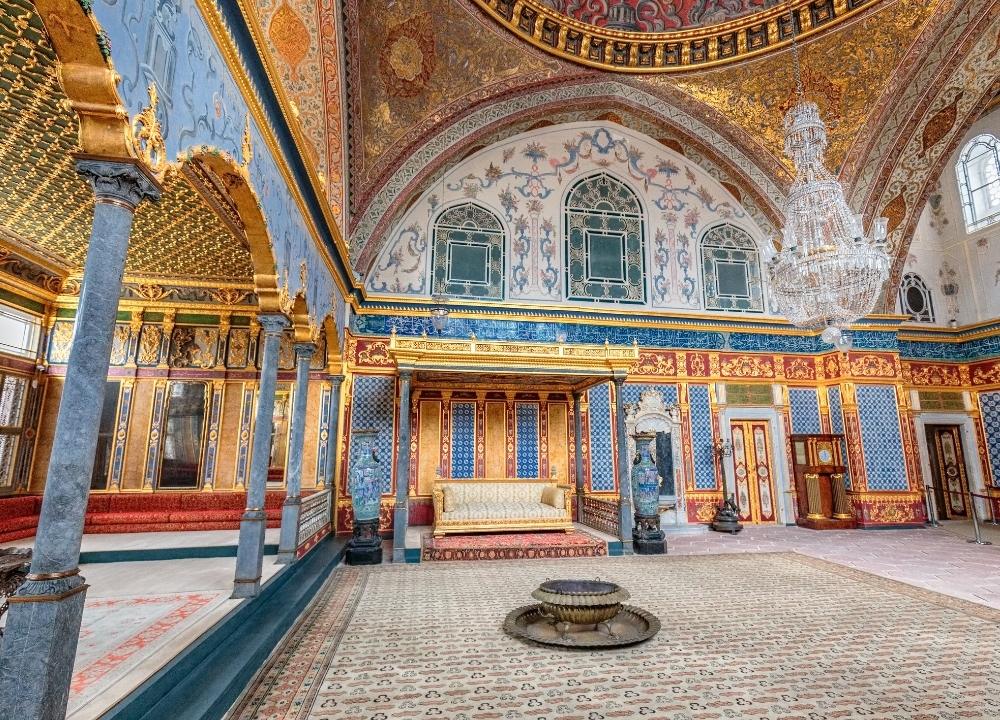
Sultanahmet is one of the oldest and most historic districts of Istanbul, welcoming many tourists from around the world. The neighborhood is home to many historical buildings from the Byzantine and Ottoman periods, making it a region rich in culture and art.
Sultanahmet offers visitors the opportunity to explore art and culture from prehistoric times to the present day. From art galleries to archaeological museums and palaces to mosques, there are many different venues in this area.
A Journey Beyond Time: Sultanahmet's Art and Cultural Heritage
Sultanahmet is a neighborhood that smells of history at every corner and takes you to another time period at every step. This area is one of the most attractive and visited places in Istanbul for both local and foreign tourists. Sultanahmet's museums and galleries offer visitors the opportunity to closely examine artifacts from different civilizations, cultures, and times. From the dresses worn by Ottoman sultans to Byzantine mosaics; from ancient sculptures to the finest examples of Islamic art. This diversity shows how rich and diverse the artistic and cultural heritage of Sultanahmet is.
Here are the best museums and galleries you can visit to explore art and culture in Sultanahmet:
1. Hagia Sophia Historical Museum
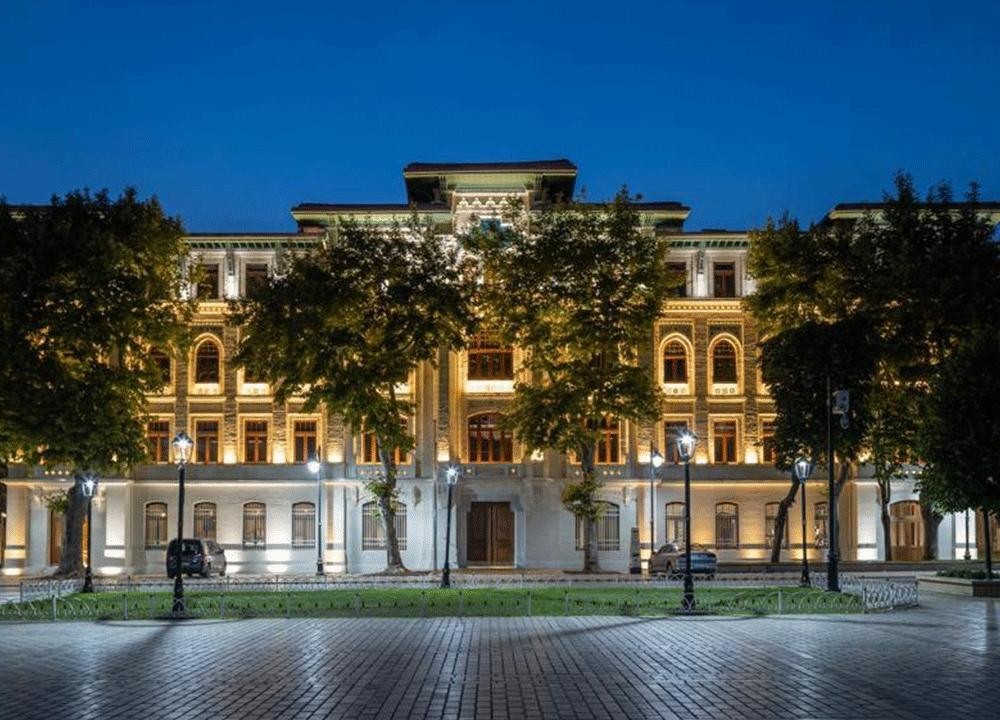
Hagia Sophia is one of the most important surviving monuments in the history of world architecture and is of great importance to the art world for its architecture, grandeur, size, and functionality. Built-in 537 by the Byzantine Emperor Justinian I, this colossal structure was originally used as an Orthodox patriarchal cathedral, converted into a mosque when it was conquered by the Ottoman Empire in 1453, converted into a museum in 1935, and today it serves as a mosque again.
The Hagia Sophia Historical Museum was opened to visitors in the Defter-i Hakani Nezareti building (Directorate of Land Registry and Cadastre) and tells the history of Hagia Sophia for about 1700 years. The museum offers immersive audiovisual and audio-visual presentations using next-generation technology, providing a detailed account of the Roman Empire and the Ottoman period. In addition, there are four sections on the first floor, with a significant number of artifacts on display for the first time: Church, Mosque, Museum, and Mosque again. A cistern from the Eastern Roman period can be seen through the windows on the ground floor of the building.
Hagia Sophia is a world heritage site protected by UNESCO and welcomes millions of visitors annually. The Hagia Sophia Historical Museum offers a unique experience for those who want to experience the rich history of Hagia Sophia from a holistic perspective. This historical building offers visitors the opportunity to discover a world where different cultures and religions coexist and is an unmissable stop for anyone visiting Istanbul.
2. Topkapi Palace Museum
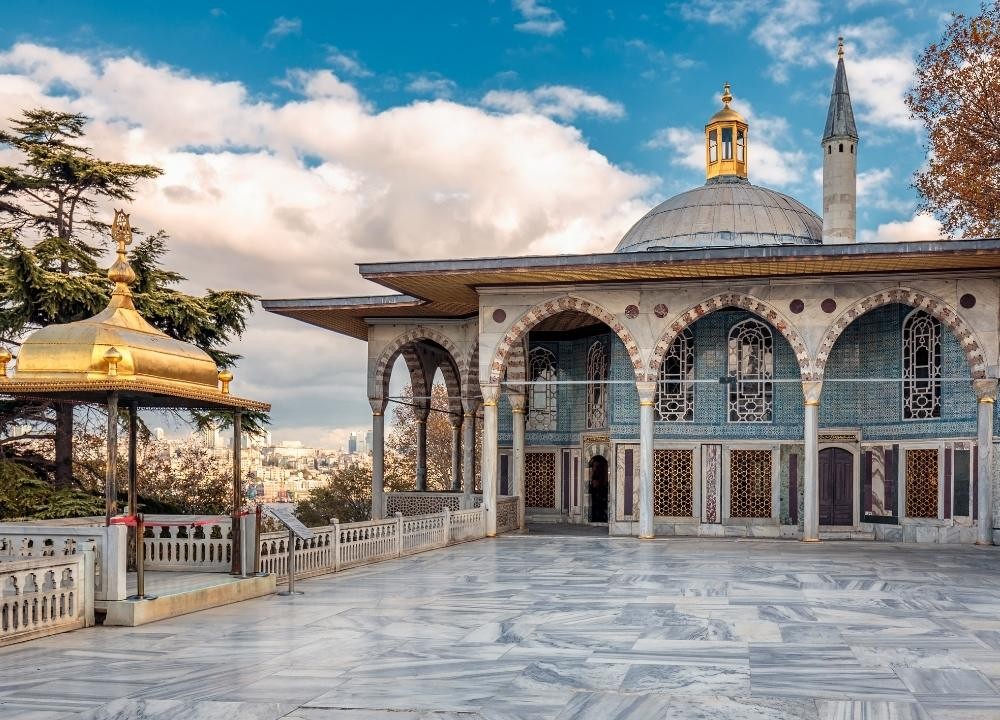
Topkapi Palace is known as the heart of the Ottoman Empire and is one of the most important historical sites in Istanbul. Built in 1465 by Mehmed II, the palace was the official residence and administrative center of the Ottoman sultans for nearly 400 years. The palace consists of four main courtyards and many buildings, each with its own unique beauty and significance.
Topkapi Palace is one of the finest examples of Ottoman architecture and art. Inside the palace, items used by the Ottoman sultans, clothes, weapons, and jewelry are on display. In addition, the harem section of the palace offers visitors many details about the private life of the sultans. The harem is where the wives, children, and servants of the sultans lived and this section is known for its rich decoration and architecture.
Topkapi Palace also houses the most sacred relics of the Islamic world. Among these relics are many precious artifacts, such as the sword and robe of the Prophet Muhammad. The palace fascinates visitors with its unique collection and magnificent architecture and offers them an unforgettable historical experience.
3. Istanbul Archaeology Museum
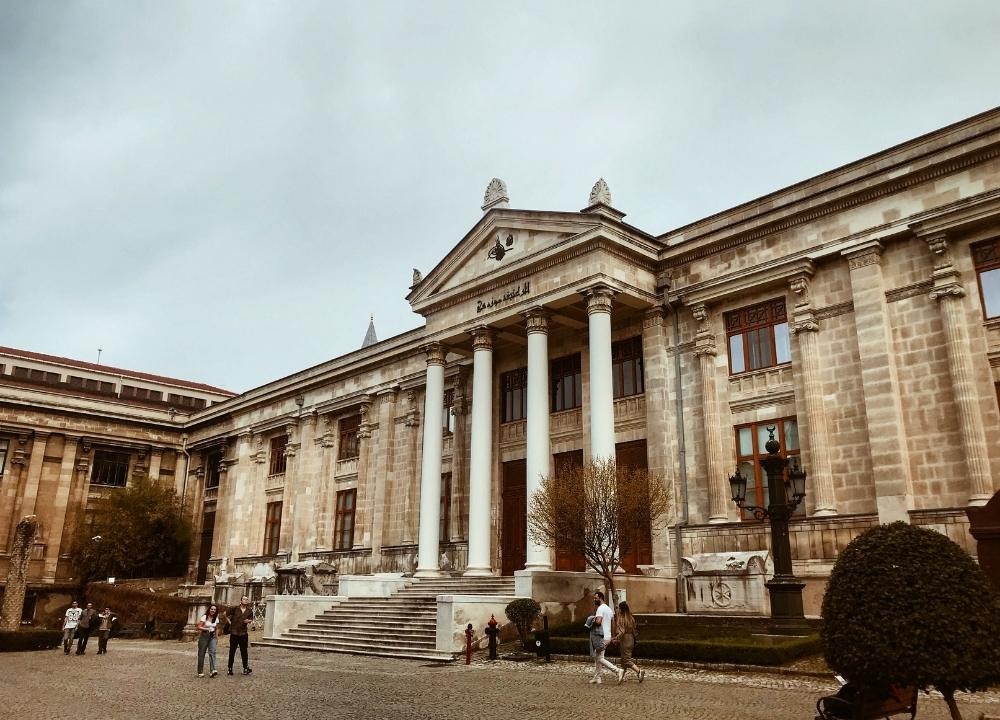
Istanbul Archaeological Museum is one of the most valuable museums in Istanbul, known worldwide. This complex consists of three separate museums: the Archaeology Museum, the Museum of Ancient Oriental Art, and the Tiled Pavilion Museum. Founded by Osman Hamdi Bey, these museums offer visitors a broad perspective of world history.
Archaeology Museum
This museum houses artifacts from antiquity to the Ottoman period. Visitors can examine statues, sarcophagi, and other archaeological finds from the ancient Greek and Roman periods. The museum also exhibits the world's first written treaty, the Kadesh Treaty.
Museum of Ancient Oriental Art
This museum houses artifacts from ancient civilizations such as Mesopotamia, Egypt, and Arabia. Visitors can see many different artifacts in this area, such as cuneiform tablets, seals, and sculptures.
Tiled Pavilion Museum
The Çinili Köşk is part of the Istanbul Archaeological Museums complex and exhibits the finest examples of Islamic art. This museum features tiles, ceramics, and other handicrafts from the Seljuk and Ottoman periods.
Istanbul Archaeological Museums offer visitors the opportunity to closely examine artifacts from different civilizations, cultures, and times. These museums are an unmissable destination for history, archaeology, and art enthusiasts.
4. Museum of Turkish and Islamic Art
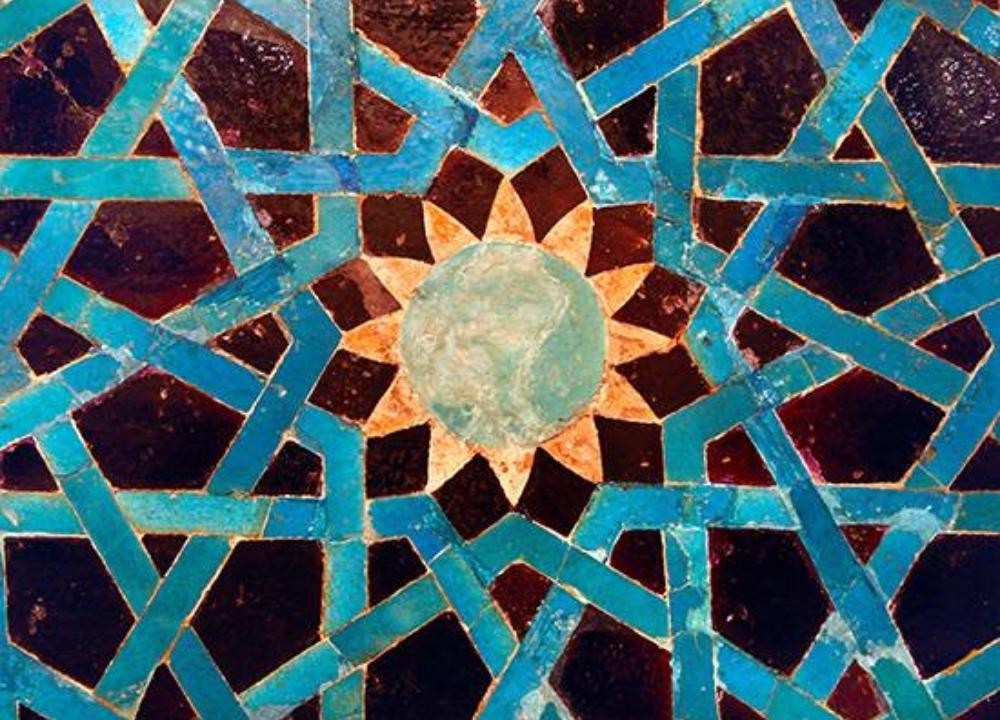
The Museum of Turkish and Islamic Art is located in Istanbul's Sultanahmet Square and houses one of the most comprehensive collections of the Islamic world. This museum presents the diversity and richness of Islamic art and culture to visitors, as well as shedding light on the history of Turkish Islam.
The museum houses many artifacts brought from different parts of the Islamic world, such as manuscript Qurans, carpets, ceramics, miniatures, and metalwork. These artifacts reflect the evolution of Islamic art and the cultural characteristics of various Islamic communities.
Another important collection of the museum is the carpet collection. This collection includes historical carpets collected from different regions of Anatolia. These carpets show visitors the richness of Turkish weaving art and motifs.
The Museum of Turkish and Islamic Arts also hosts various events and temporary exhibitions. These events offer visitors a deeper perspective on Islamic culture and art.
This museum is an ideal stop for visitors who want to explore various aspects of Islamic art and culture. By spending time in this museum, visitors can gain new insights into the rich history and culture of the Islamic world.
5. Chora Museum
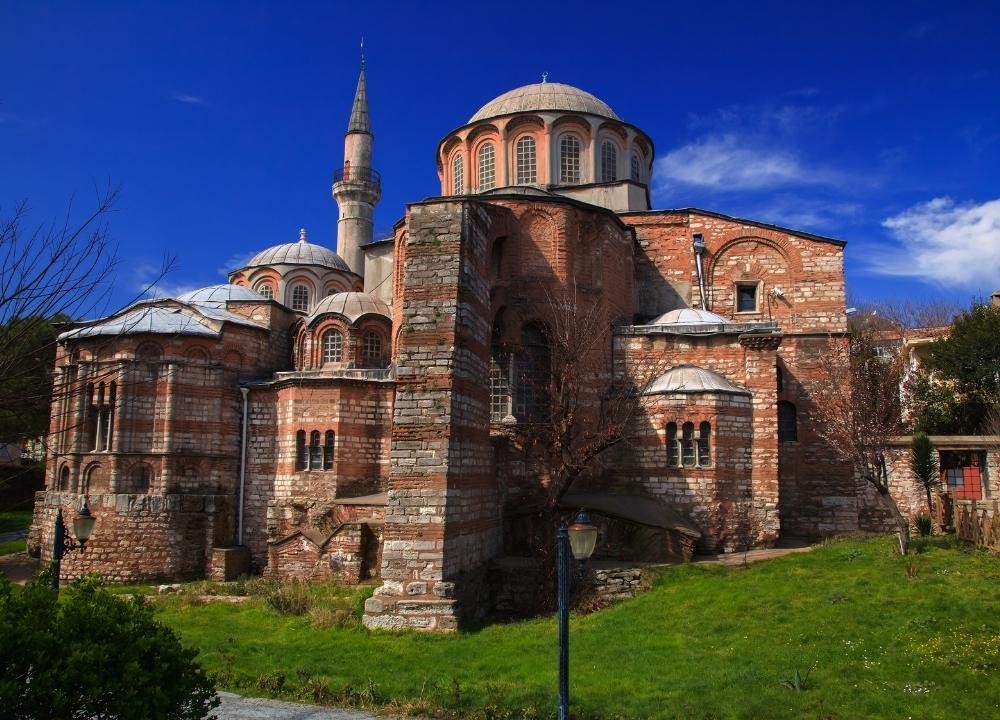
Kariye Museum is a Byzantine building located in the Edirnekapı neighborhood in the history-filled Sultanahmet district of Istanbul. Originally known as the Chora Church, this building is famous for its mosaics and frescoes made in the 14th century. These mosaics and frescoes represent the pinnacle of Byzantine art and are known worldwide. The Kariye Museum was built by the Byzantine Emperor Justinian in the 6th century and was later expanded in various periods.
The Kariye Museum was converted into a mosque during the Ottoman period and after many years of use as a mosque, it was opened as a museum in 1948. The museum offers visitors the opportunity to get to know the artworks, architecture, and culture of the Byzantine period. The mosaics and frescoes in the Kariye Museum depict important events and holy people from the history of Christianity. These works attract attention with their detailed and colorful designs and show visitors the subtleties of Byzantine art.
Kariye Museum is one of the most important places to visit in Sultanahmet for both history buffs and art lovers. The museum contributes to the historical and cultural richness of Sultanahmet by allowing visitors to discover the magnificent art and culture of the Byzantine period.
6. Grand Palace Mosaic Museum
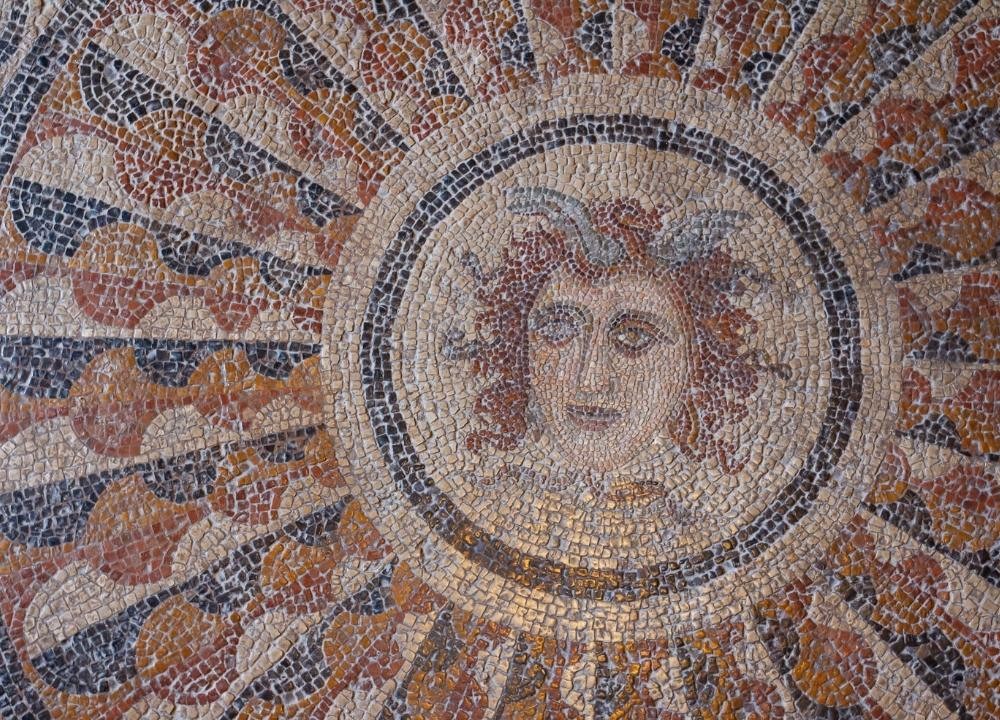
The Great Palace Mosaic Museum is located in Sultanahmet Square and houses an enormous collection of mosaics from the Byzantine period. This museum was built on the ruins of the Great Palace, which was built by the Byzantine Emperor Justinian I between 527 and 565. The museum opened to the public in 1953 and offers visitors many mosaics that reflect the daily life, culture, and art of the Byzantine period.
The mosaics on display in the museum date back to the 6th century and mostly include scenes of daily life, mythological subjects, and nature themes. These mosaics are composed of colorful pieces of stone and glass and are remarkable for their detailed design. The mosaics demonstrate the high level of Byzantine art and craft and offer visitors a deep insight into the aesthetics of this period.
The Great Palace Mosaic Museum is an unmissable destination for visitors interested in the Byzantine period. The museum offers visitors a unique perspective on the history and culture of Istanbul, the capital of the Byzantine Empire. This museum, when visited in conjunction with other historical sites in the Sultanahmet area, offers visitors an unforgettable experience.
7. Basilica Cistern Museum
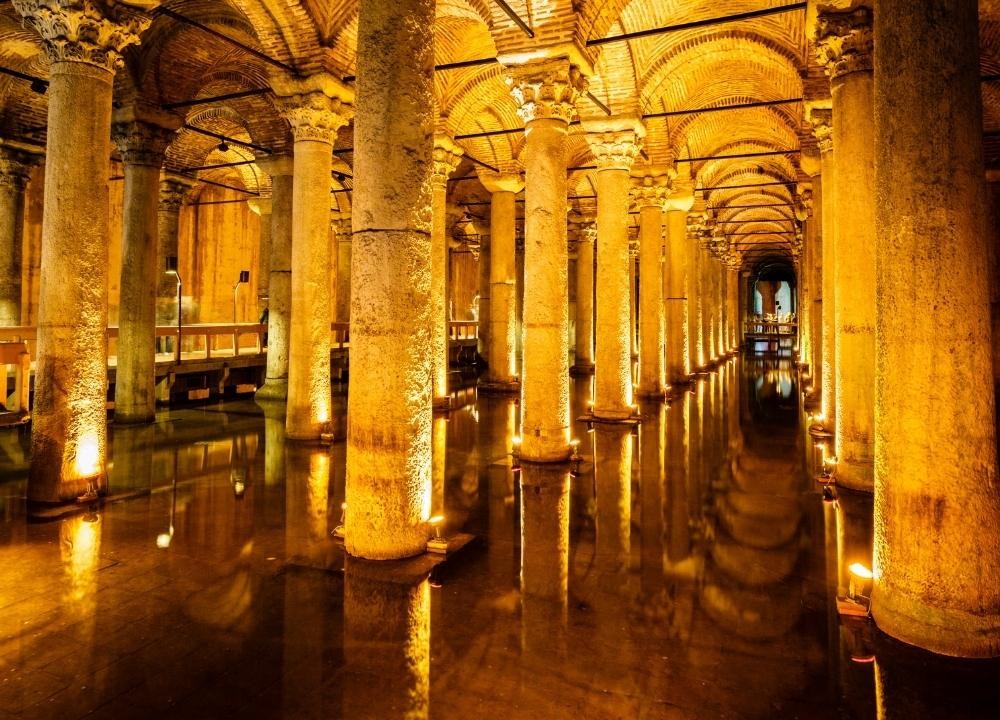
The Basilica Cistern is located in the historic Sultanahmet district of Istanbul and was built by the Byzantine Emperor Justinian I in 532. This enormous structure is the largest underground cistern in Istanbul and has supplied the city with water throughout history. The Basilica Cistern is a huge underground structure supported by 336 columns, which makes the atmosphere impressive.
The cistern contains architectural features from the ancient Roman and Byzantine periods. Some of the columns were taken from the remains of earlier structures and have different styles and motifs. One of the most famous columns of the cistern is the serpent column. This column is supported by two blocks of stones known as the head of Medusa, and these stones are of great interest to visitors to the cistern.
The Basilica Cistern offers visitors the opportunity to discover the engineering skills and aesthetic taste of the Byzantine period. The cistern is softly lit and, together with the gentle fluttering of the water, offers visitors a mystical and peaceful atmosphere. The Basilica Cistern is a must-see for anyone visiting Istanbul and this historic structure offers visitors an unforgettable experience.
8. Istanbul Museum of the History of Science and Technology in Islam
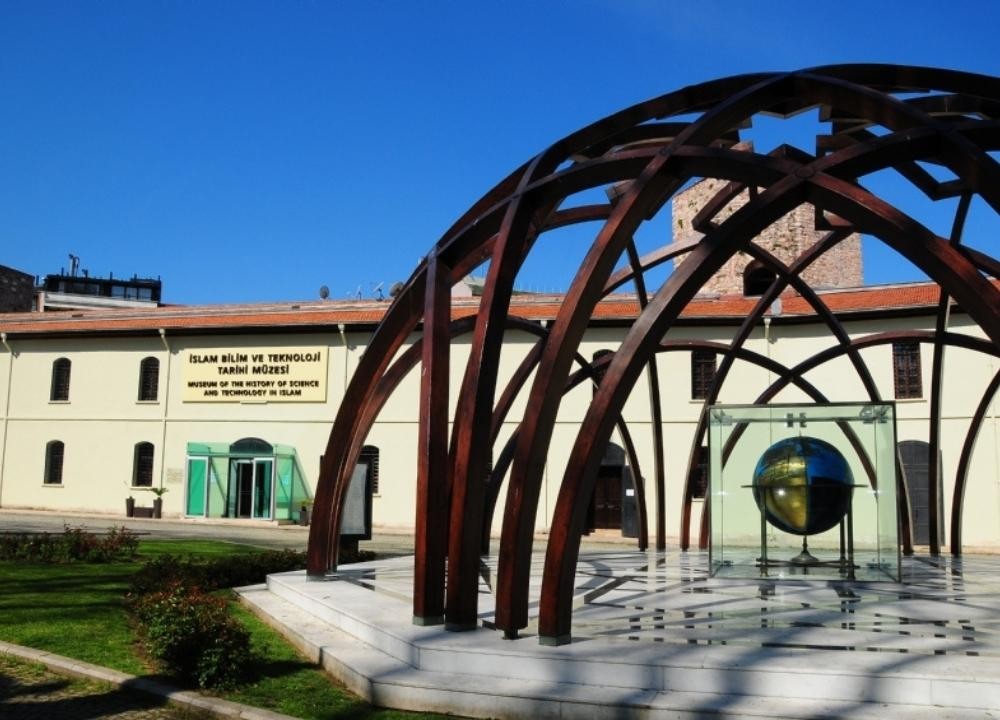
The Museum of the History of Islamic Science and Technology, located in Istanbul's historical Gülhane Park, in the Has Stables Building adjacent to the Palace Wall, offers visitors a detailed overview of the contributions of the Islamic world in the field of science and technology. During the Ottoman period, the museum housed the stables where the horses of the sultan and his close servants were kept. This museum, which was prepared by Prof. Dr. Fuat Sezgin, the historian of Islamic science, and opened in 2008, stands out as the first of its kind in Turkey and the second in the world after Frankfurt, with an exhibition area of 3,500 square meters and a total collection of 585 instruments, device replicas, models and models.
By exhibiting models and models of the works of Islamic scientists, the museum makes it possible to see replicas of some of the inventions made by Islamic Civilization during the creative period between the 9th and 16th centuries. Among the important works on display are Al-Idrisi's replica of the World Map, Taqi al-Din's Mechanical Clock, Al-Jazari's Elephant Clock and the Cupping Machine, Abu Said al-Sijzi's Planetarium, Abdurrahman al-Sufi's celestial globe, and Ibn Sina's al-Qanun fi't Tıbb.
In the garden of the museum is the Ibn Sina Botanical Garden, opened in 2013, which contains 26 of the medicinal plants mentioned in the second volume of Ibn Sina's al-Qanun fi't-Tibb. This garden offers visitors the opportunity to discover the botanical knowledge of the Islamic world.
The museum is also very close to the historically significant Gülhane Fountain and is an unmissable stop for anyone visiting Istanbul.
9. Art Galleries
Sultanahmet offers a rich experience to its visitors with its art galleries as well as history and culture. In this area, there are many galleries exhibiting the works of local and foreign artists. These galleries host a wide variety of artworks from modern art to traditional Turkish art, from photography to sculpture. While exploring different branches of art in these galleries, visitors can also have the opportunity to meet the artists and chat about their works.
Art galleries in Sultanahmet are often located in places steeped in history, offering visitors a two-way experience: Viewing works of art and exploring historical sites. These galleries increase the attractiveness of Sultanahmet for art lovers as well as for visitors who are not interested in art. Visiting art galleries in Sultanahmet is a great way to gain a deeper understanding of the cultural richness of this historic district.

